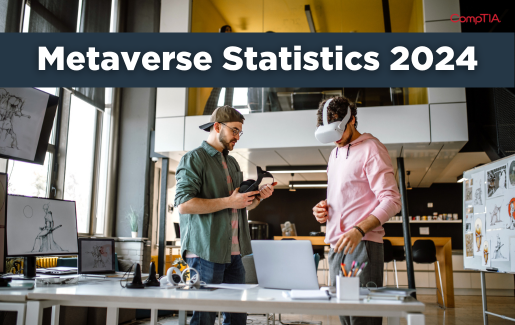 One of the constant themes running through discussions of enterprise technology is complexity. Today’s environment would be unrecognizable to IT pros from 20 years ago. In fact, even the term “IT” may not reflect the right mindset these days. Even though the first information technology (IT) departments were highly specialized, the task they were asked to do was relatively simple: Provide the underlying infrastructure to support business efforts.
One of the constant themes running through discussions of enterprise technology is complexity. Today’s environment would be unrecognizable to IT pros from 20 years ago. In fact, even the term “IT” may not reflect the right mindset these days. Even though the first information technology (IT) departments were highly specialized, the task they were asked to do was relatively simple: Provide the underlying infrastructure to support business efforts.
Today’s digital organizations are asking for something much different. A wide variety of skilled professionals are responsible for not only providing the infrastructure, but also building sophisticated software and performing cutting-edge data analysis, all while keeping the entire operation secure. On top of that, decades of a digital foundation have led to an environment where countless new technology trends have a chance to blossom. It’s all a lot to handle, and the old way of doing things might not cut it anymore.
The CompTIA IT Industry Outlook 2024 showcases 10 trends that we expect to drive enterprise technology this year. Not all trends are created equal, though. For those trends that have the most direct impact for IT professionals, it’s important to understand the way they relate to each other and how they might influence operations. Let’s take a look at three specific trends as an example.
Trend #1: Cloud Architecture Accelerates Solution Complexity
Cloud computing is not necessarily the first topic that comes to mind in the world of technology (we’ll get to that in a minute). However, cloud computing is the modern foundation for building more advanced solutions. That’s what this trend is all about. The tech that makes the headlines—which then tends to become the tech organizations are chasing for competitive differentiation—requires a flexible, robust infrastructure to achieve maximum potential. In many cases, that type of infrastructure may even be the only way to make the solution work at all.
Many executives originally saw cloud computing as a way to continue driving the cost/performance equation further down the path it had always been on. There’s certainly that opportunity in shifting to cloud systems, but the journey shouldn’t stop there. By leveraging cloud systems properly and learning how to make them as efficient as possible, businesses can give themselves a platform for applications they could never achieve on-prem. Especially for those IT pros working directly with infrastructure, staying on top of the latest cloud skills will be incredibly valuable.
Trend #2: AI Hype Fades, But Workflows Continue Evolving
Now we’ve arrived at the topic that sits at the top of the list for many decision-makers. The deluge of artificial intelligence (AI) news throughout 2023 was almost overwhelming, and in some ways that flood of information will keep coming in 2024. Within individual organizations, we expect the excitement to fade a bit as people realize the costs and limitations of generative AI. However, we also expect people to keep pursuing AI-enabled workflow within a new understanding of the constraints.
As we’ve said before, AI and other emerging technologies are usually not standalone products that get purchased and plugged in. Even though ChatGPT kicked off the current hype cycle as a standalone consumer application, transforming a large language model into an enterprise tool is a tall order. AI will likely be woven into the full suite of a business’s workflow applications requiring a solid foundation (see above) and also a strong knowledge of desired outcomes. Everyone has seen examples of AI providing less-than-perfect answers, so the best way to have AI augment experience is to have that experience in the first place.
Trend #3: Productivity Is the Driver for Digital Transformation (DX)
At first glance, this trend may seem a bit too obvious. After all, it’s no secret that organizations are always pursuing greater productivity. The nuance comes from tying productivity to digital transformation (DX). Most DX discussions have focused heavily on the technology—which products are ready for prime time and how do businesses ensure a smooth implementation? Keeping an eye on productivity as the guiding principle for DX initiatives changes the approach.
The biggest way that a productivity goal affects DX discussions is in the metrics used for success. One of the most challenging aspects of strategic IT is finding a way to describe the value of technology. It’s not about that same old cost/performance equation. Instead, IT pros need to help business leaders understand the impact of investments, and there’s no better way to do that than to show improvement in productivity. It will require some extra effort to build the models and make the connections, but IT pros should eventually be able to show how building a cloud infrastructure and then layering new technology like AI is helping workers get more done.
The high degree of complexity is a blessing and a curse. On the negative side, the many layers that go into any individual solution require much more investment, and it can be difficult to convince those holding the budget that things aren’t as easy as they appear in fancy demos. On the positive side, those who build a thorough understanding of all the layers and sharpen their ability to communicate effectively will be incredibly valuable, helping their organizations leap ahead of the competition.
Check out the CompTIA IT Industry Outlook 2024 report for a full list of trends to watch in the upcoming year.




0